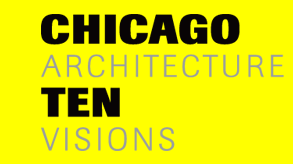 |
 |
|
|
|
|
ELVA RUBIO
Elva Rubio studied at the University of Georgia and the University of Miami before pursuing a master’s degree in architecture, which she received in 1992 from Washington University in St. Louis, Missouri. Her professional career began in St. Louis, but since moving to Chicago she has served as senior vice president of ISI/Epstein and Sons and today maintains her own firm as well as serving as design director at the architectural firm of Gensler Chicago. Rubio has combined teaching with professional practice throughout her career at the School of the Art Institute, the Illinois Institute of Technology, and the University of Illinois at Chicago. Her work is appreciated for its creative use of materials and concern for energy conservation. Rubio’s design for Pond Studios—a textile and carpet firm's new headquarters built in LaGrange, Georgia—won both Distinguished Building and Interior Architecture awards from the Chicago chapter of the American Institute of Architects (AIA) in 1997.
|
 |
Views
Rubio’s installation plays on the notion of the voyeuristic experience in Chicago. Visual devices placed throughout the room allow visitors to glimpse alternative visions of Chicago’s present and future and engage viewers in a dialogue about the city. The construction and optical illusions of the devices were inspired by early optical experiments by Marcel Duchamp, Victorian “vision boxes,” Joseph Cornell’s collages, and stereoscopes.
Architect’s statement (excerpt)
Chicago exemplifies the voyeuristic experience. Our space plays on this assumption by establishing a series of visual devices that are placed around the room to engage the viewer in a dialogue of the city. Throughout the room, the visual devices beckon to the visitor without explicitly revealing their contents. These objects are partially supported by Chicago iconic elements, such as a balloon frame wall and a skeletal freestanding steel frame emulating the Sears Tower. . . The purpose of the devices is to convey narratives about Chicago’s future, a prophecy of what the urban environment will offer—from various perspectives and through various means of expression.
|
|
 |
|
|
